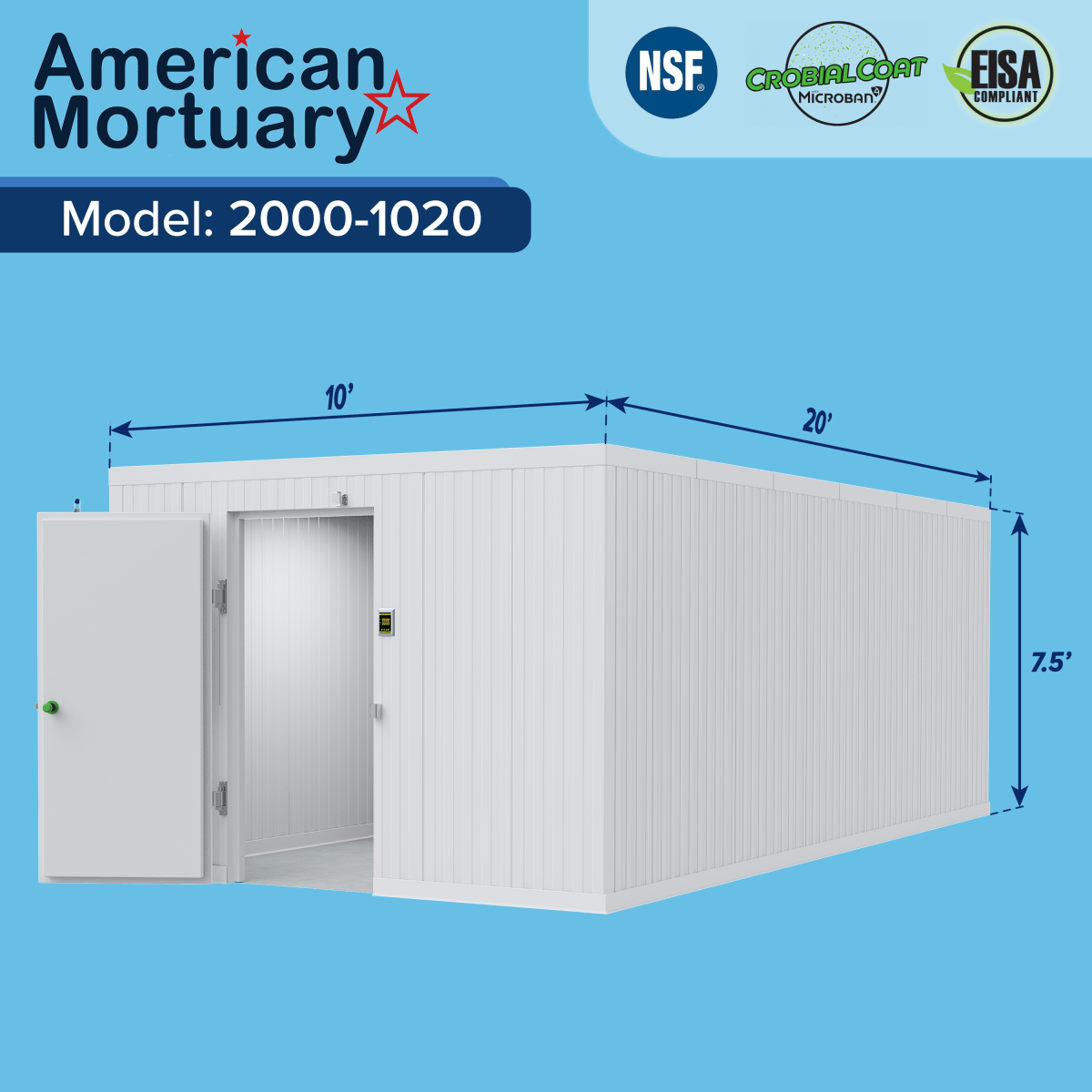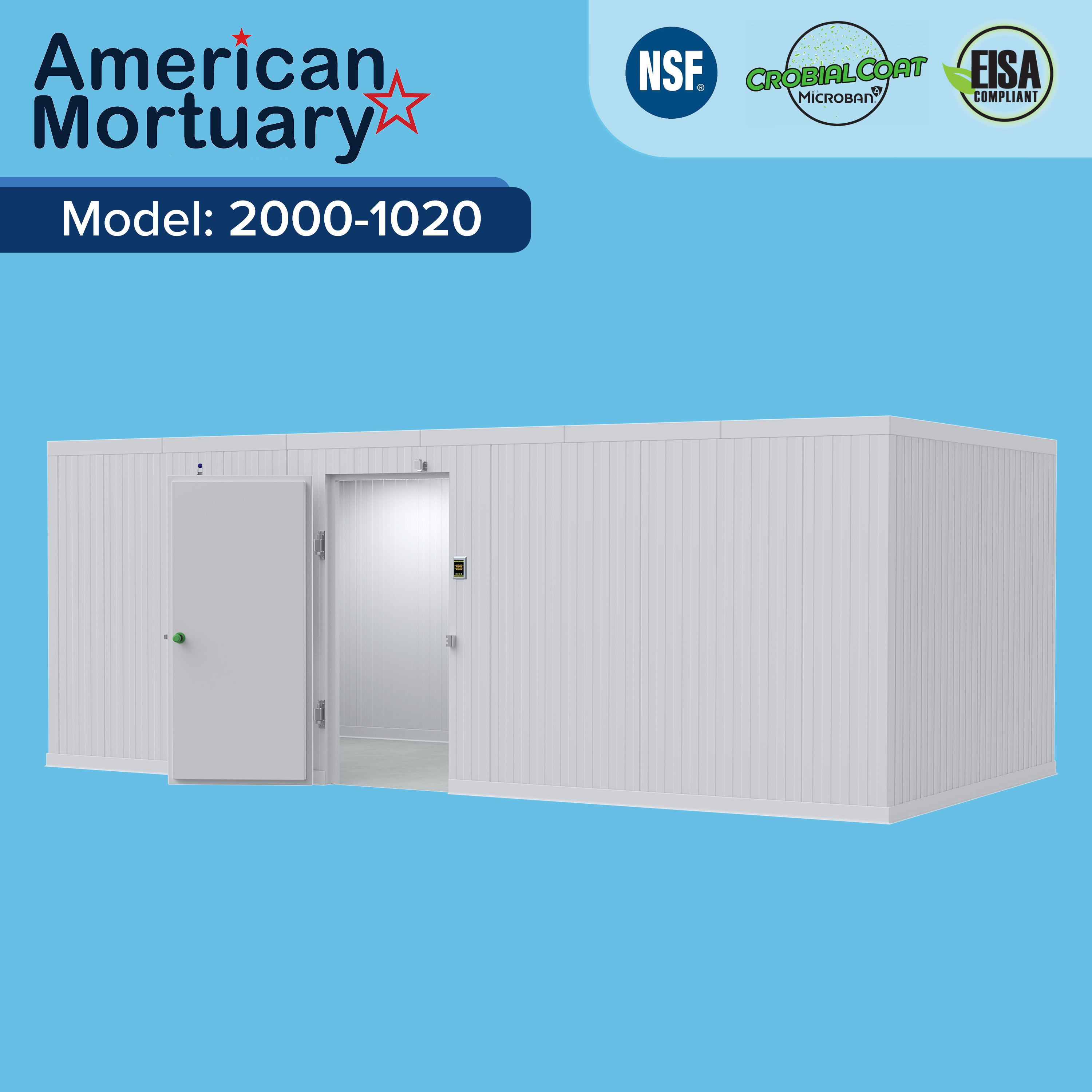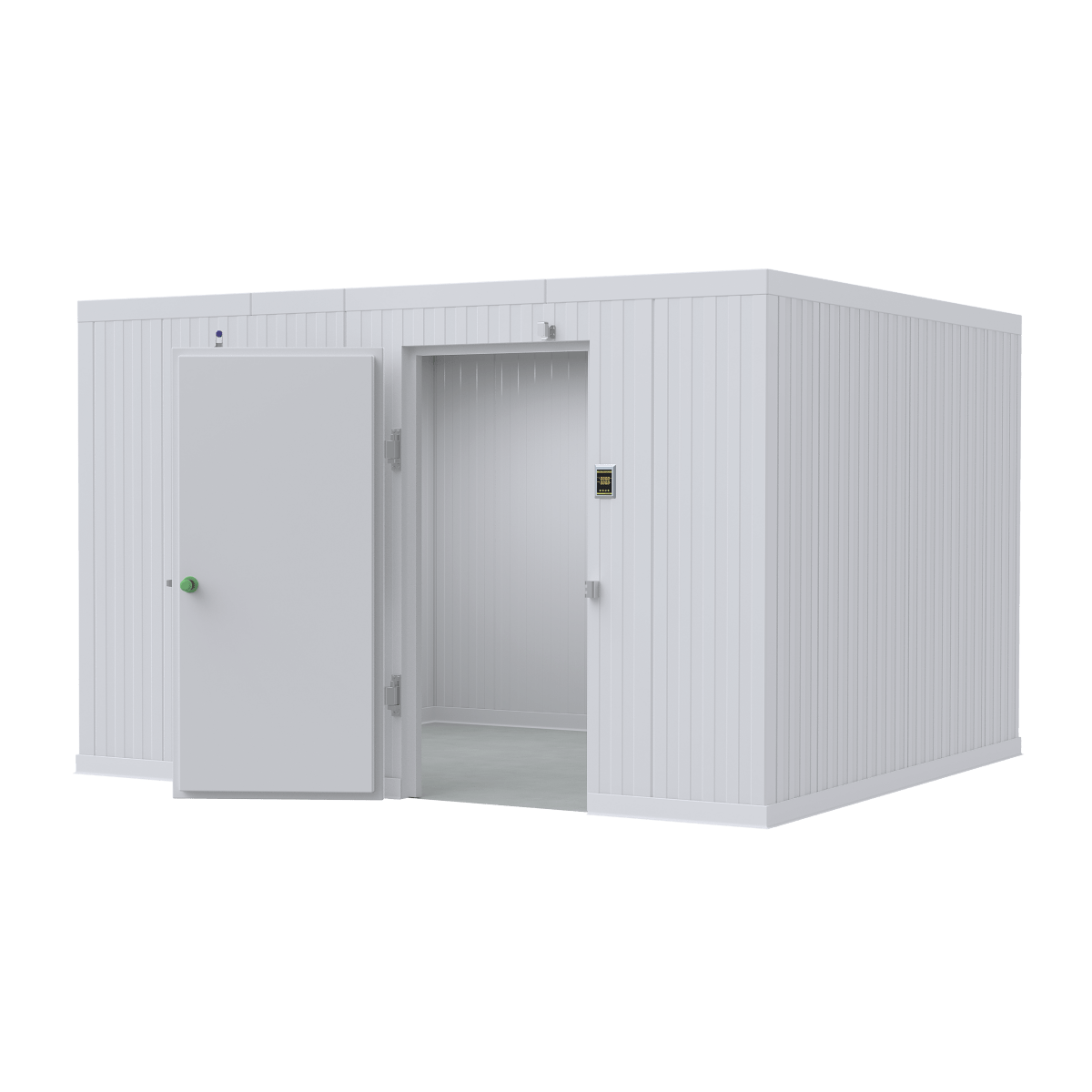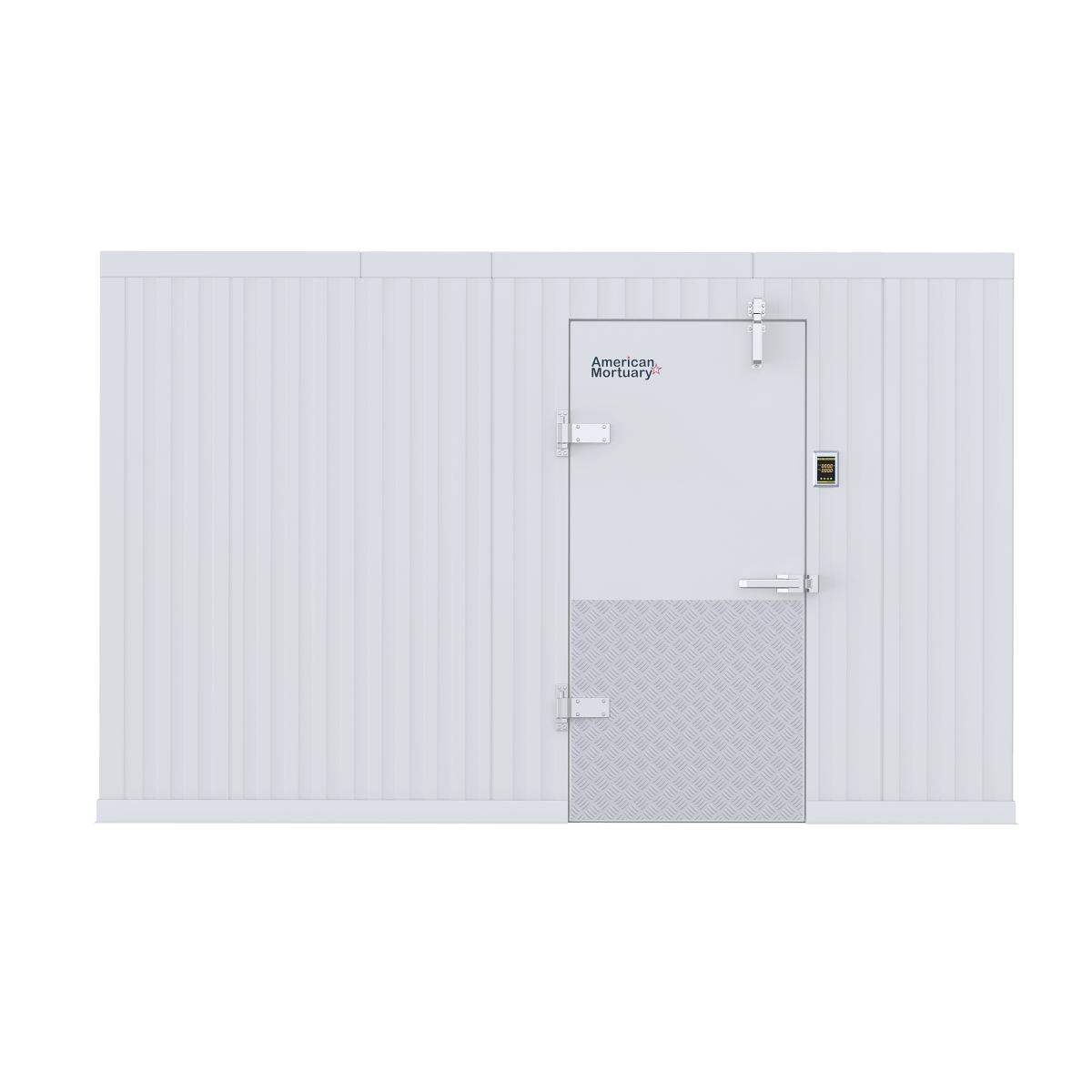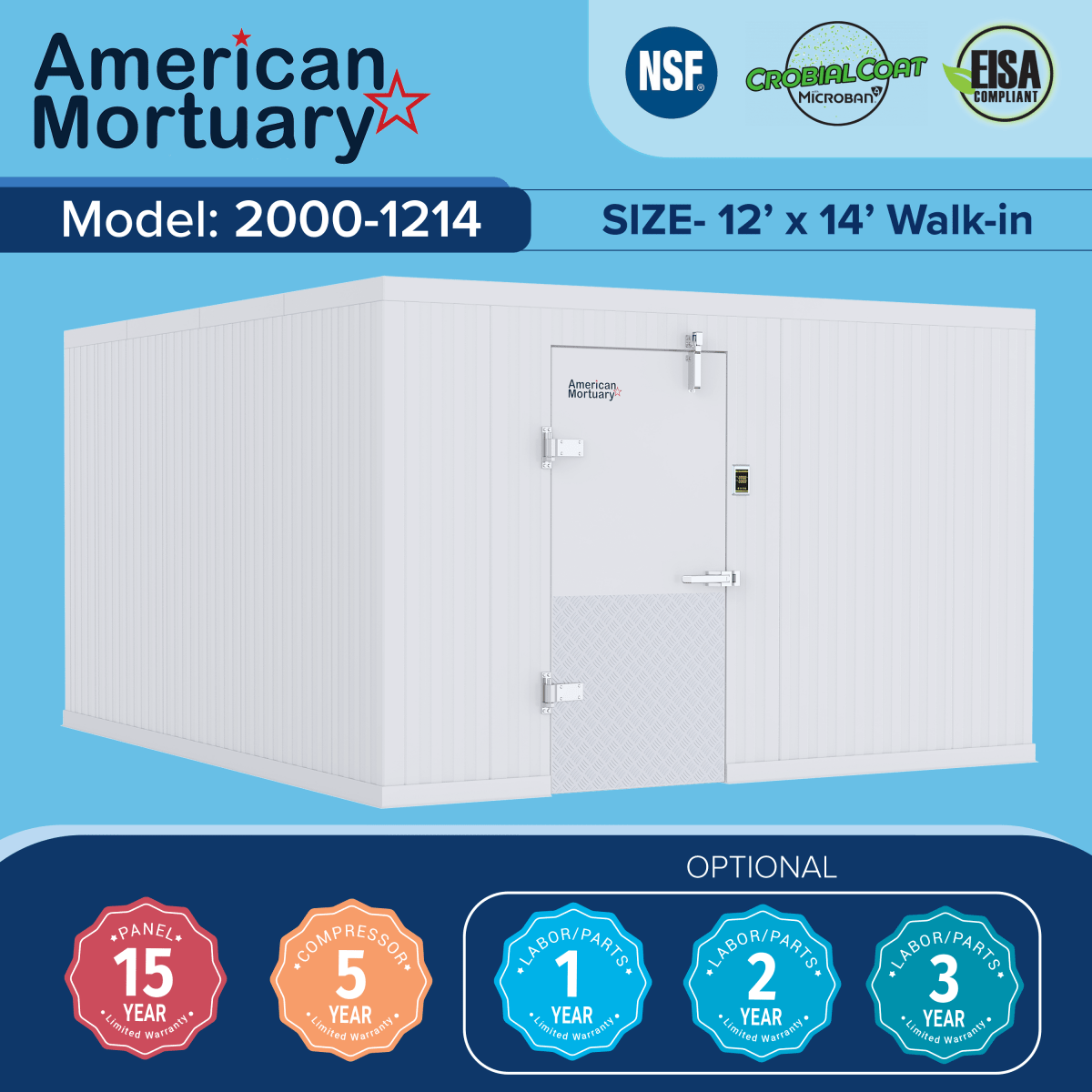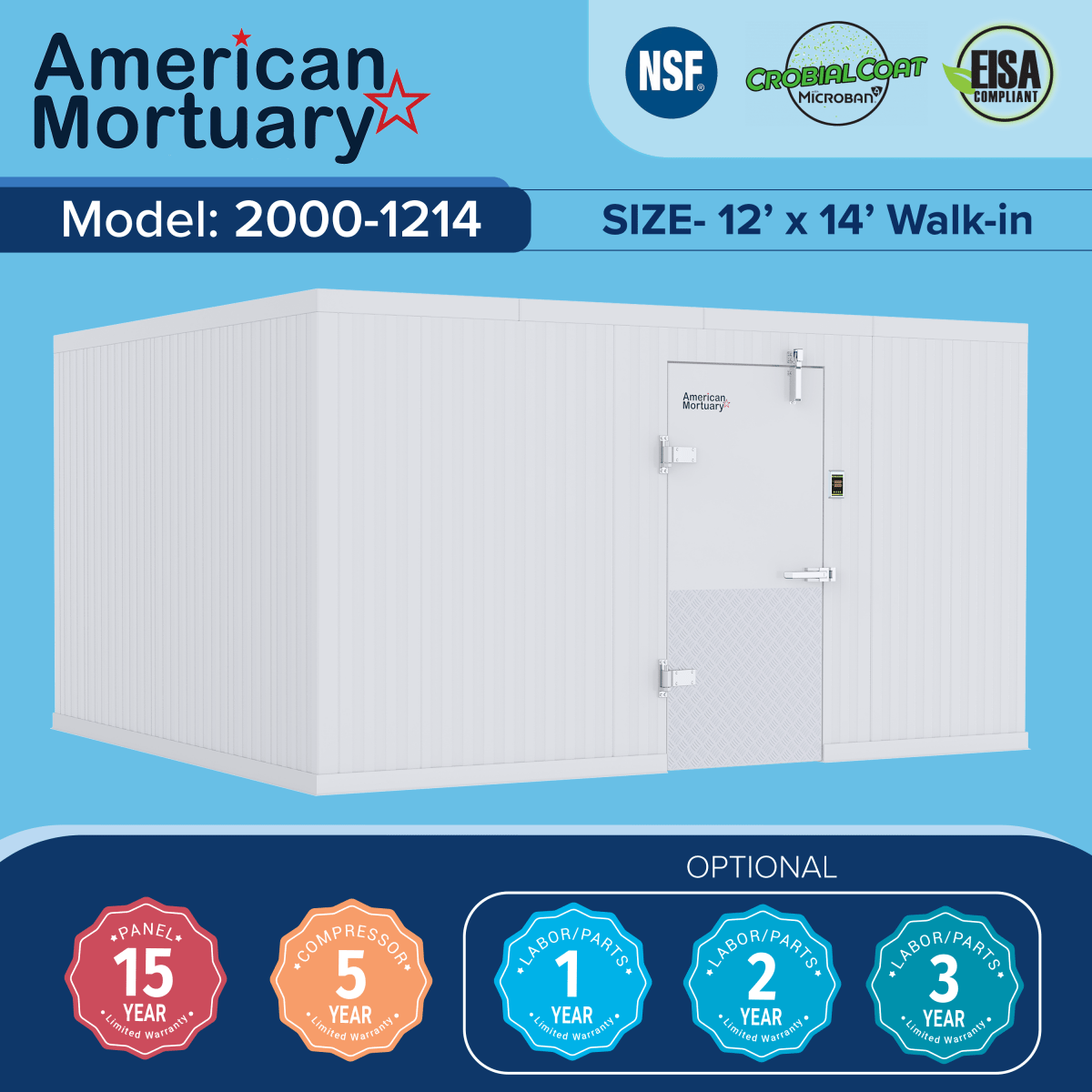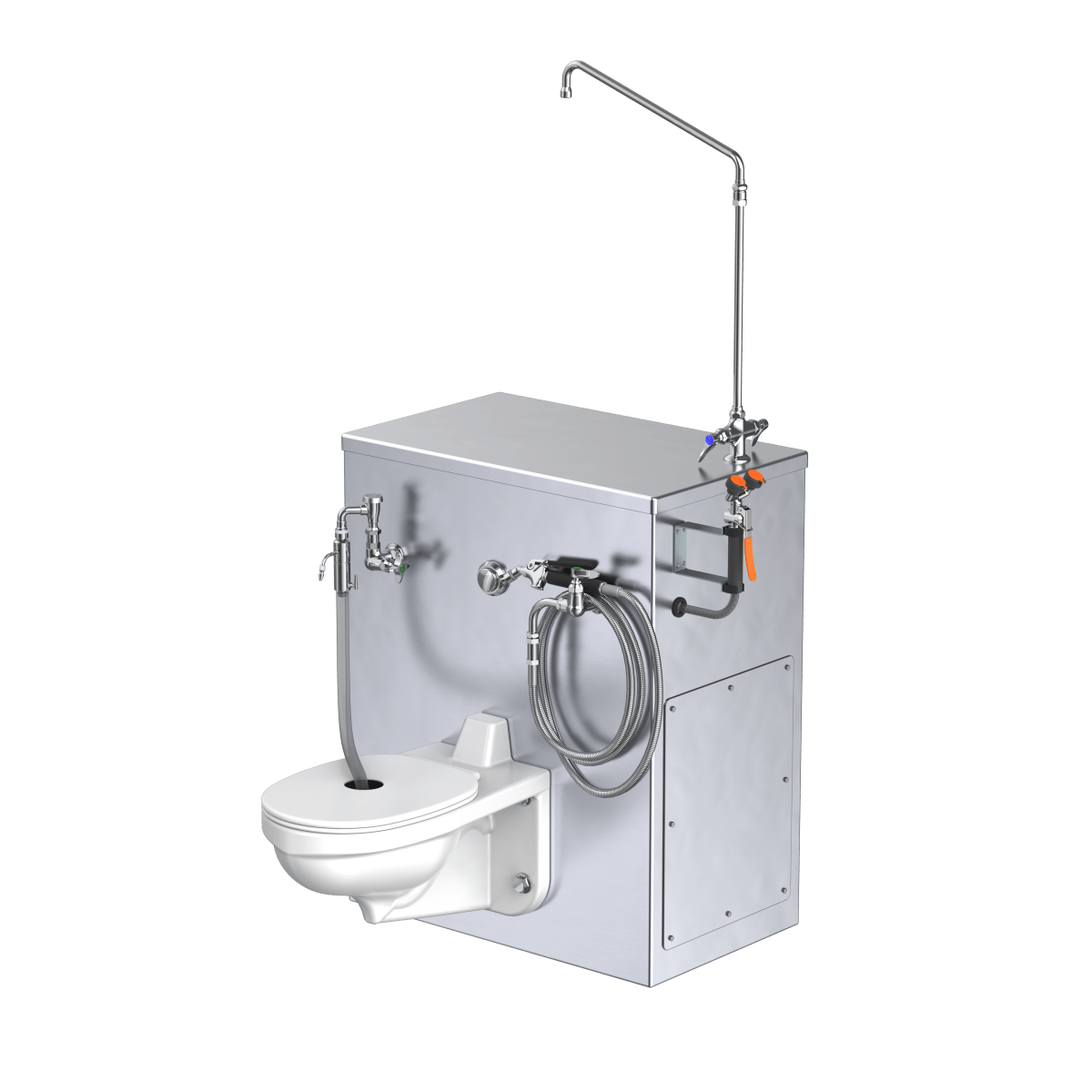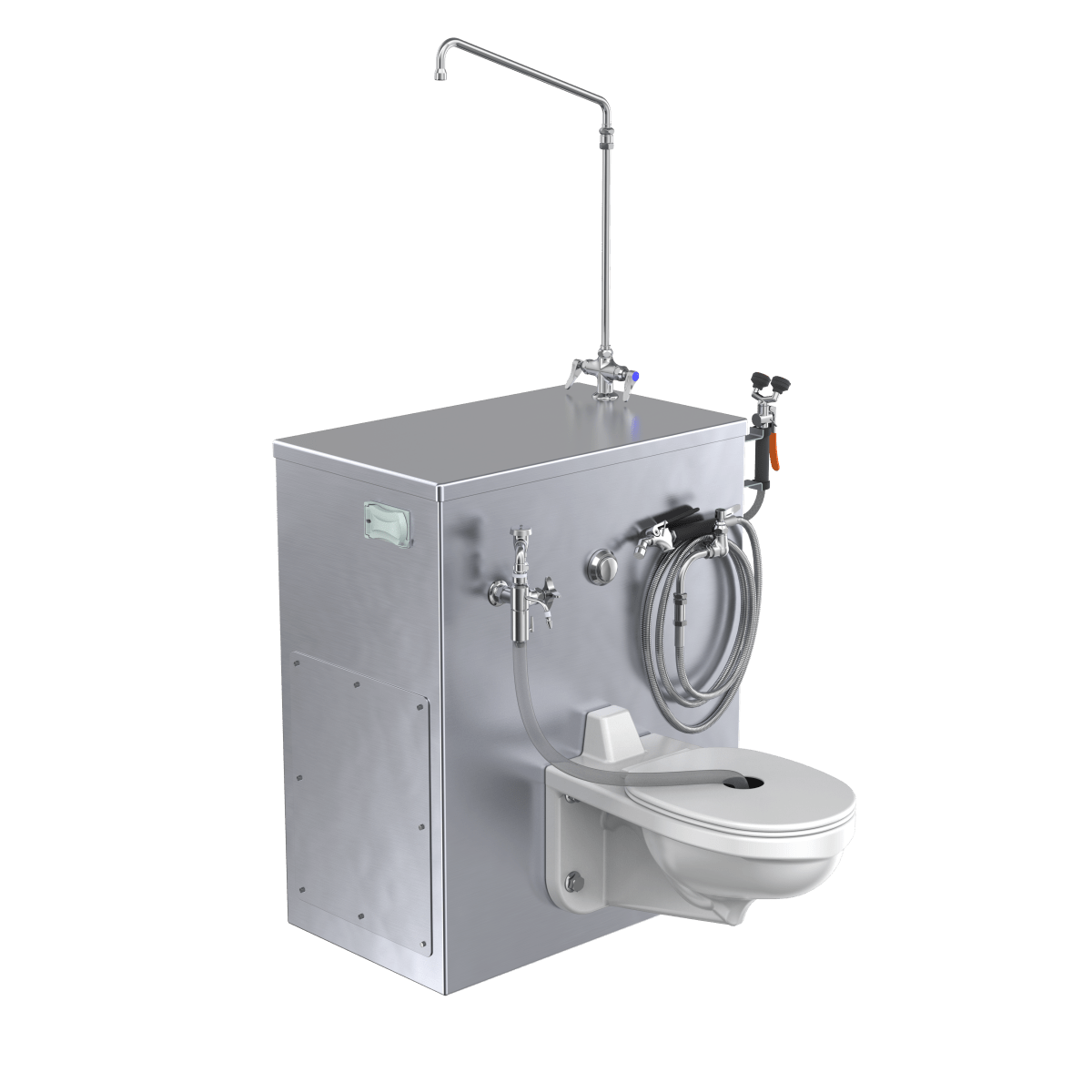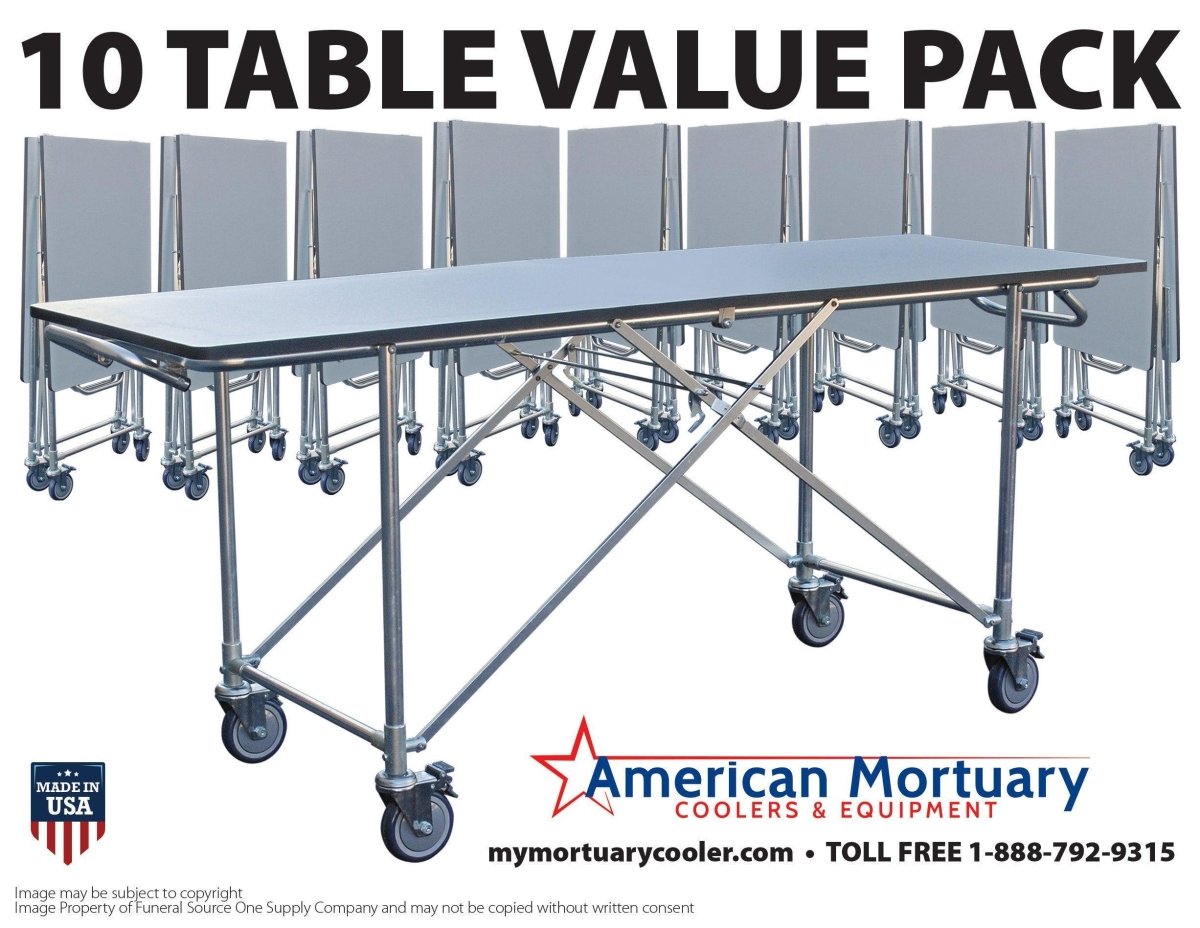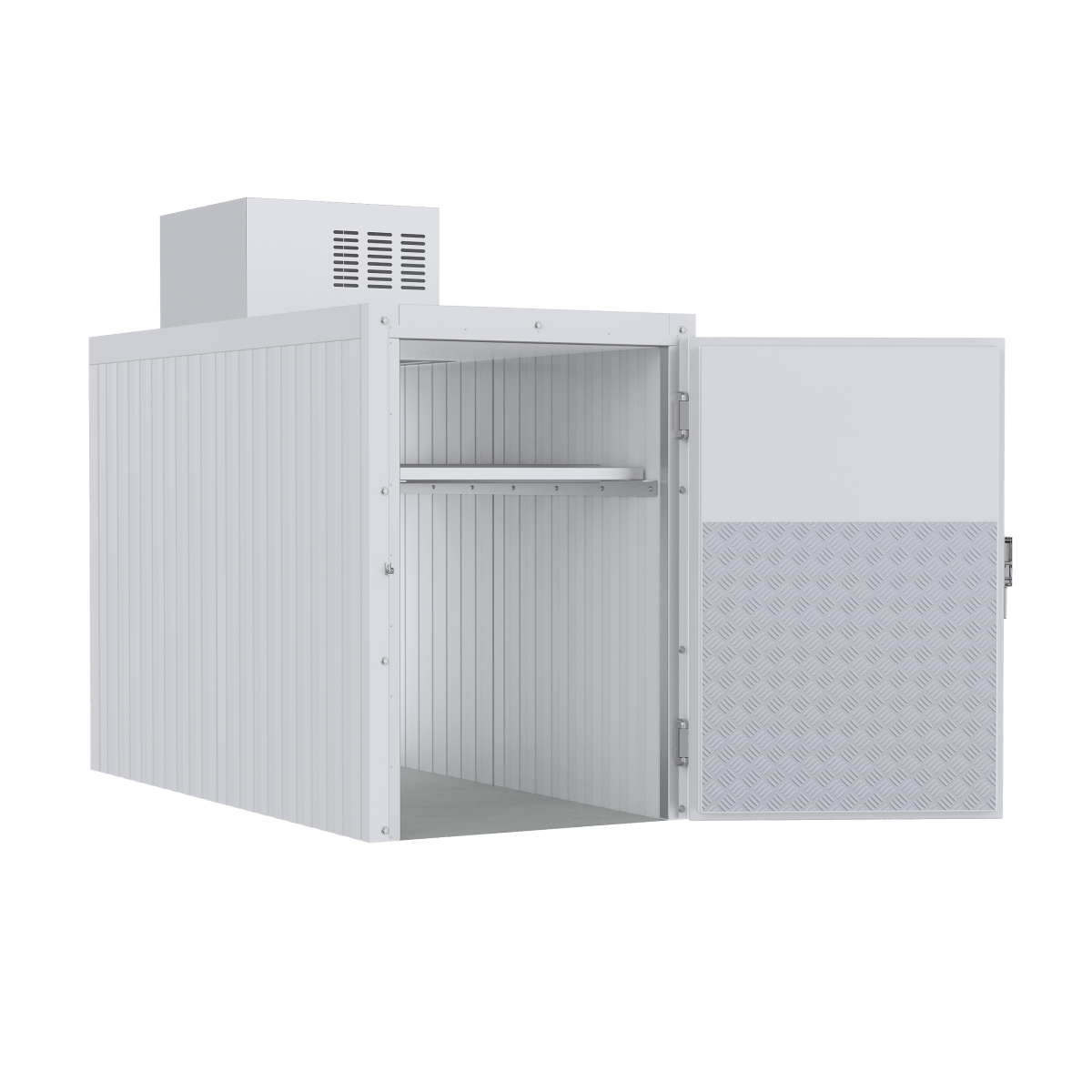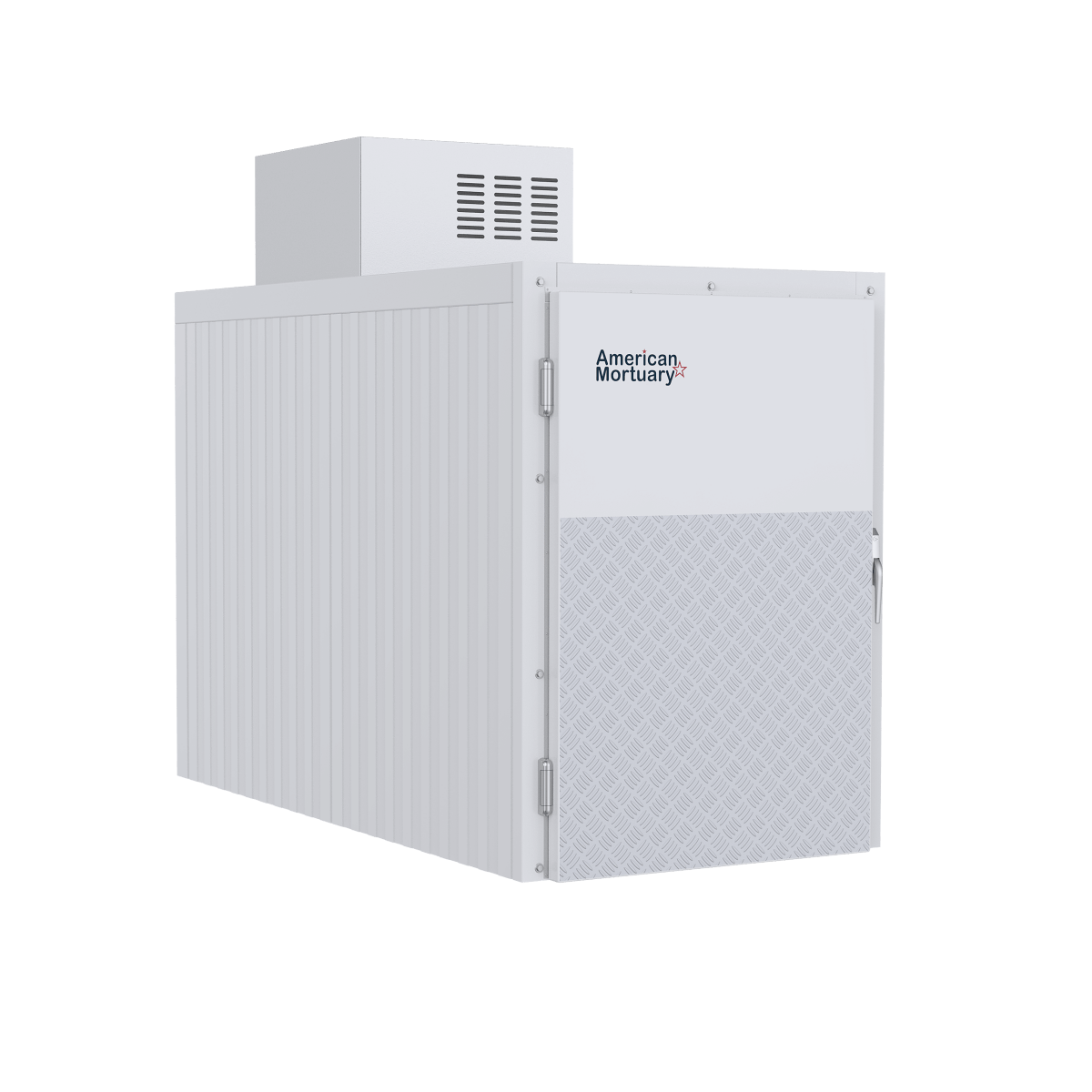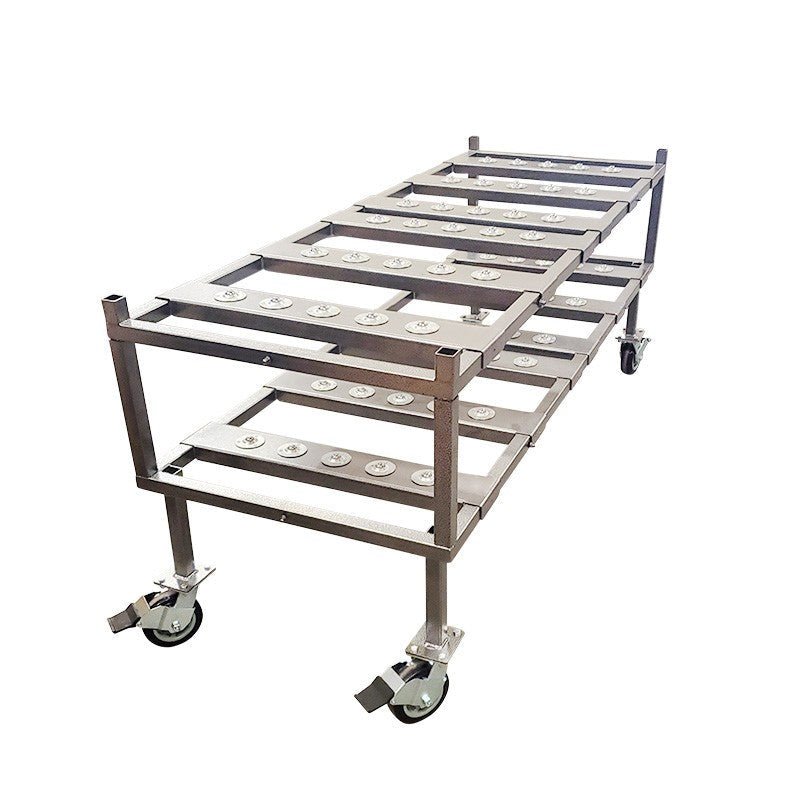Understanding Walk In Cooler Floors: The Foundation of Cold Storage
Walk in cooler floor construction is critical for maintaining temperature, preventing moisture damage, and supporting heavy loads in cold storage environments. Here's what you need to know:
| Walk In Cooler Floor Essentials | Details |
|---|---|
| Required For | Always required for freezers; optional for ground-level coolers on concrete |
| Standard Load Rating | 800 pounds per square foot for basic floors |
| Heavy-Duty Rating | Up to 5,000 pounds per square foot for structural floors |
| Minimum R-Value | R-28 for freezer floors (federal requirement) |
| Common Materials | Aluminum diamond plate, stainless steel, epoxy, insulated concrete |
Your walk-in cooler's floor serves three vital purposes: it creates a thermal barrier to maintain temperature, prevents moisture infiltration, and provides structural support for equipment and inventory. Without proper flooring, you'll face increased energy costs, potential condensation damage, and possible structural failures.
The only scenario where an insulated floor might not be required is for a walk-in cooler (not freezer) installed directly on a ground-level concrete slab with no rooms underneath. Even then, thermal breaks at wall perimeters are recommended to prevent condensation issues.
I'm Mortuary Cooler, a national-level supplier specializing in walk-in cooler installations with extensive experience designing and implementing walk in cooler floor systems for mortuaries and other temperature-sensitive environments. My team ensures each installation meets both regulatory requirements and practical operational needs.

Quick look at walk in cooler floor:
Understanding the Walk In Cooler Floor: Purpose & Anatomy
Your walk in cooler floor is so much more than just something to stand on. Think of it as the unsung hero of your cold storage system – working silently beneath your feet to keep everything running efficiently.
When properly built, a good walk-in cooler floor tackles four crucial jobs at once:
First, it creates a thermal barrier that stops heat from sneaking up through the ground into your carefully cooled space. Without this barrier, you'd essentially be trying to refrigerate the earth beneath you!
Second, it acts as a moisture guardian, blocking vapor that would otherwise create condensation, puddles, and potential slip hazards inside your cooler.
Third, it provides rock-solid structural support, distributing the weight of everything from product-laden shelves to staff moving around inside.
And finally, it offers a sanitary surface that meets health code requirements and can be easily cleaned – absolutely essential in mortuary settings where cleanliness is non-negotiable.
"I've seen businesses literally throw money away each month because they skimped on proper floor insulation," explains our lead engineer at American Mortuary Coolers. "A well-insulated floor with the right R-value can cut energy bills by up to 30% compared to poorly insulated setups."
The heart of quality walk in cooler floors is typically a polyurethane foam core with an R-value of 28 or higher. This insulation gets sandwiched between durable metal skins (usually aluminum or galvanized steel) and secured to the concrete slab below. It's a surprisingly complex system designed to maintain perfect temperature control while supporting everything above it.
Why a Walk In Cooler Floor Matters for Energy Efficiency
Let's talk dollars and cents. An inadequately insulated walk in cooler floor isn't just an engineering problem – it's a direct hit to your bottom line.
Here's what happens: Heat naturally wants to move from warm areas to cold ones. Without proper floor insulation, the earth's natural warmth continuously seeps upward into your cooled space. Your refrigeration system then works overtime trying to remove this extra heat, driving up your electricity bills month after month.
The numbers are eye-opening:
- Walk-ins without proper floor insulation typically experience up to 30% more heat gain
- This translates to roughly 18-20% higher energy costs when outside temperatures climb from 80°F to 90°F
- A properly polyurethane foamed-in-place insulated floor can achieve an initial R-value as high as 32 per 4-inch thickness
Condensation creates another headache. When warm, moisture-laden air contacts the cold floor surface, water droplets form. Over time, this moisture can damage your floor structure, create dangerous slip hazards, and even promote mold growth. A properly insulated floor stays warm enough on its surface to prevent condensation from forming in the first place.
Basic Anatomy of a Walk In Cooler Floor Panel
Let's peek inside a typical walk in cooler floor panel to understand what makes it work so well:

The outer metal skins (typically aluminum or galvanized steel) provide durability and a cleanable surface that stands up to daily use. Between these skins lies the insulation core – usually 4-inch thick polyurethane foam with that crucial R-value of 28 or higher.
Look at the edges and you'll find clever tongue-and-groove designs that allow panels to interlock securely, while cam-locks (those metal fastening systems) pull panels tightly together during installation. A vapor barrier prevents moisture from migrating through the floor, and cove bases create those seamless, cleanable transitions where your floor meets the walls.
At American Mortuary Coolers, we factory-test each walk in cooler floor panel for precise fit and finish before it leaves our facility. This attention to detail ensures your installation goes smoothly, whether we're delivering to Johnson City, TN or anywhere across the continental United States.
The right floor isn't just about keeping things cold – it's about creating a reliable foundation for your entire operation that will perform flawlessly for years to come.
Do You Need an Insulated Floor? Location, Temperature & Code
Let's talk about whether you actually need an insulated walk in cooler floor - because sometimes you might not! The answer depends on where you're putting your cooler, how cold you need it, and what the building codes require in your area.
Think of it this way: your floor needs change dramatically depending on where you place your walk-in. A cooler sitting directly on a concrete slab at ground level has very different needs than one perched above a basement or on the second floor of your building.
Location Factors
If you're installing on an indoor concrete slab at ground level, you might be able to skip the insulated floor for coolers (those running above 32°F). But if you're putting that same cooler on an outdoor concrete pad, you'll definitely want floor insulation since the ground temperature fluctuates much more dramatically.
For any installation that's above ground level – whether over a basement, crawlspace, or on an upper floor – an insulated floor isn't just recommended, it's absolutely necessary. Without it, you're asking for trouble.
"One customer tried to save money by skipping floor insulation on a second-floor installation," our installation manager at American Mortuary Coolers recalls. "Six months later, they were dealing with water damage in the ceiling below and had to spend three times what the floor would have cost on repairs."
Temperature Requirements
Temperature makes a big difference in your floor needs:
Walk-in coolers (32°F to 41°F) might work without insulated floors in certain conditions (we'll cover that exception shortly).
Walk-in freezers (below 32°F) always – and I mean always – require insulated floors. This isn't just our recommendation; it's federal regulation.
Code Requirements
Speaking of regulations, there are several code requirements that might affect your walk in cooler floor decision:
Federal guidelines mandate that walk-in freezer floors have an R-value of at least R-28. This isn't arbitrary – it's the minimum needed to prevent frost heave, where moisture in the subfloor freezes and expands, potentially causing serious structural damage over time.
Health codes typically require floors that are smooth, non-absorbent, and easily cleanable – especially important in mortuary applications where sanitation is paramount.
Local energy codes may have additional requirements for insulation values, so it's always worth checking with your local building department.
Even when you don't need a fully insulated floor, you'll still need a thermal break where the walls meet the floor. This prevents cold from "bridging" from the walls into the concrete, which can cause condensation problems.
The One Exception: Floorless Coolers on Ground-Level Concrete
There's really only one scenario where you might skip the insulated floor panels: when you're installing a walk-in cooler (not a freezer) directly on a ground-level concrete slab with no rooms underneath. This is sometimes called a "floorless" installation, though that's a bit misleading since you're still using the concrete as your floor.
With floorless installations, proper sealing between the walls and floor becomes critically important. This is typically handled with vinyl screeds (U-shaped channels that create a seal between wall panels and concrete) and cove bases (those curved transitions that eliminate 90-degree corners where wall meets floor).
As noted in the article "Do I Need a Floor or No Floor for Walk-in Coolers?": "The only time that an insulated floor is not required in a walk-in cooler is when it is located on cement, at ground level, with no rooms directly underneath it."
But even in these cases, you need to be careful about moisture in the concrete slab. If the concrete doesn't have a proper vapor barrier underneath, ground moisture can migrate upward and cause condensation inside your cooler. At American Mortuary Coolers, we always recommend performing a moisture test on existing slabs before committing to a floorless design.
Walk In Cooler Floor Requirements Over Basements & Upper Floors
When your walk-in cooler sits above anything – whether it's a basement, parking garage, or second-floor space – an insulated floor isn't optional, it's essential. Without proper insulation, the temperature difference will cause condensation on the underside of your floor, leading to a cascade of problems: water damage, mold growth, structural deterioration, and potential health code violations.
For these installations, your walk in cooler floor must include a vapor barrier to block moisture migration, sufficient insulation (minimum R-28 for freezers, R-25 recommended for coolers), and appropriate structural support for your expected load.
For freezers installed over occupied spaces, you may also need heater grids embedded in the subfloor. These prevent the structure below from freezing, which might sound extreme, but we've seen serious structural damage occur when this precaution was skipped.
"A properly designed floor system is like insurance," says our design team at American Mortuary Coolers. "It might seem like an extra expense upfront, but it prevents costly problems down the road and ensures your cooler operates efficiently for years to come."
Main Types of Walk-In Cooler and Freezer Flooring
Let's talk about walk in cooler floor options – because choosing the right one makes all the difference between a headache-free installation and years of problems down the road.
When we're helping customers at American Mortuary Coolers, one of the first questions we ask is: "What will you be rolling or placing on this floor?" Your answer determines everything.
The main floor types break down by weight capacity:
Standard Floors handle 800 pounds per square foot of evenly distributed weight. These are your basic floors for light-duty applications – perfect when you're mostly dealing with foot traffic and stationary shelving. They feature that 4-inch polyurethane core sandwiched between metal skins without additional reinforcement.
Heavy-Duty Floors step up to 1,000 PSF capacity. We add a half-inch plywood underlayment beneath the top metal skin, giving you that extra structural support needed for regular cart traffic and hand trucks. It's our most popular option for standard mortuary applications.
Pallet Jack Floors are the workhorses at 2,500 PSF. These include that same insulation core and plywood underlayment, but we top them with 3/16" diamond tread aluminum. These floors can take the punishment of hand pallet jacks and heavier storage without showing wear.
Structural Floors are the heavy lifters at 5,000 PSF. We beef these up with 3/4" plywood with stiffeners at 12-inch intervals and top them with diamond tread aluminum. If you're using motorized equipment or extremely heavy loads, this is your floor.
Insulated Concrete offers a custom solution when even our structural floors won't cut it. These are ideal for forklift traffic and specialized high-load applications.
"Most floor failures happen because someone underestimated what they'd be putting on it," our installation team always says. "That pallet jack might only weigh 500 pounds empty, but load it up with product, and you're looking at a much heavier point load."
We've seen this particularly in our mortuary coolers, which is why we launched our American Mortuary Coolers Improve Safety and Durability with Diamond Plate Flooring initiative. It's made a world of difference for our clients dealing with slippery conditions and heavy carts.

Don't forget about ramps! Whether interior or exterior, they're essential for wheeled access. We custom-build these to match your floor type and traffic patterns.
Standard vs Heavy-Duty vs Structural Walk In Cooler Floor
The difference between walk in cooler floor types isn't just about the weight rating – it's about how they handle real-world use.
Think about it this way: a standard floor might technically hold 800 pounds per square foot when weight is perfectly distributed. But roll a 300-pound cart over it, and all that weight concentrates on four tiny wheel contact points. That's why understanding dynamic loads matters so much.
Our structural floors aren't just stronger – they're engineered to handle the movement, impact, and point pressure that happens in daily operations. When a client tells us they'll "only occasionally" use a pallet jack, we usually recommend going up a level in floor strength. That occasional use tends to become regular pretty quickly!
For mortuary applications specifically, we've found the pallet jack-rated floors with diamond tread provide the perfect balance of durability and safety. The textured surface gives staff sure footing even when conditions aren't ideal – something particularly important when handling deceased loved ones.
Finish Options: Metal, Tile, Epoxy, Vinyl
The top layer of your walk in cooler floor matters just as much as what's underneath. It's what you'll see, clean, and walk on every day.
Metal finishes remain our most popular option. Smooth aluminum offers easy cleaning and moderate slip resistance, while diamond tread aluminum provides excellent grip even when wet. For facilities with particularly stringent sanitation requirements, stainless steel delivers premium corrosion resistance and cleanability.
"Diamond tread has saved more than one person from a nasty fall," our installation manager likes to say. "That pattern isn't just for looks – it's functional safety engineering."
Tile options bring different benefits. Traditional quarry tile offers excellent durability at moderate cost. Ceramic works well for lighter-duty applications with more style options, while porcelain provides a premium, low-porosity surface that resists staining.
Epoxy coatings create a seamless surface that's becoming increasingly popular. Standard epoxy offers good chemical resistance, while antimicrobial formulations actively inhibit bacterial growth – particularly valuable in mortuary environments. For extra slip resistance, quartz-filled epoxy adds texture without sacrificing cleanability.
Vinyl systems provide economical options. Sheet vinyl installs easily with moderate durability, PVC tiles offer the advantage of simple section replacement if damaged, and reinforced vinyl stands up better to medium traffic areas.
When helping clients choose, we consider several factors: slip resistance (critical for safety), antimicrobial properties (essential in food service and mortuary settings), NSF compliance (required for food applications), maintenance needs, and installation complexity.
At American Mortuary Coolers, we've found most of our clients ultimately choose diamond tread aluminum for its perfect balance of safety, durability and ease of cleaning. When specific antimicrobial requirements exist, we often pair this with specialized treatments to create the ideal mortuary environment.
Remember – your floor is literally the foundation of your operation. Choosing wisely means fewer headaches and lower costs down the road.
Choosing the Right Floor by Traffic & Load
Picking the perfect walk in cooler floor is a lot like choosing the right shoes for a job – it all depends on what you'll be doing and how much weight you'll be carrying! At American Mortuary Coolers, we've seen how crucial this decision is for the longevity of your investment.
Think about your cooler's daily life: Will it see just a few people walking through, or will you be rolling heavy carts across it multiple times a day? Understanding two key load concepts will help you make the right choice:
Uniform Load (PSF) is weight spread evenly across your floor – like standing on both feet.
Point Load (PSI) is weight concentrated in a tiny area – like standing on your tiptoes. This is where many cooler owners get into trouble!
Here's a real-world example that surprises many of our customers: A seemingly light 200-pound cart on two small wheels can actually hammer your floor with over 7,000 PSF at those tiny contact points. That's enough to damage a standard floor that's only rated for 800 PSF!

When our Tennessee team consults with mortuary clients, we always ask about the heaviest item that will move across the floor and how it will be transported. As our project manager likes to say, "It's better to overestimate your needs than to deal with a failed floor later – especially when you're handling something as important as human remains."
Here's a quick comparison to guide your decision:
| Floor Type | Load Capacity | Typical Finish | Ideal Traffic Type |
|---|---|---|---|
| Standard | 800 PSF | Smooth Aluminum | Foot traffic, light stationary loads |
| Heavy-Duty | 1,000 PSF | Smooth or Diamond Tread | Hand carts, medium stationary loads |
| Pallet Jack | 2,500 PSF | Diamond Tread Aluminum | Hand pallet jacks, heavy stationary loads |
| Structural | 5,000 PSF | Diamond Tread Aluminum | Motorized equipment, extreme loads |
| Insulated Concrete | Varies (5,000+ PSF) | Sealed Concrete or Epoxy | Forklifts, heaviest loads |
Walk In Cooler Floor for Beverage Kegs & Pallet Jacks
While most mortuaries won't be storing kegs, the weight comparison is helpful – a full half-barrel keg weighs about 160 pounds, similar to many mortuary transport devices. When these heavy items are moved on dollies or hand trucks, small wheels concentrate tremendous pressure on your walk in cooler floor.
I remember installing a cooler for a Dallas customer who initially wanted our standard floor. After seeing how they handled their equipment, we strongly recommended upgrading to a structural floor. They later thanked us profusely – a competitor with a standard floor had already experienced significant damage within six months!
For environments using pallet jacks, you absolutely need a floor rated for at least 2,500 PSF. The small, hard wheels on these devices create intense point loads that can puncture inadequately reinforced floors, leading to costly repairs and potential temperature control issues.
For these heavier applications, we typically recommend:
Structural floor systems with polyurethane pillars or reinforcement at regular intervals to distribute weight properly Diamond plate aluminum overlay which not only looks professional but dramatically improves durability and provides excellent slip resistance Reinforced transitions at doorways where impact damage is most likely to occur
Floorless + Ramp Combos for Light Foot Traffic
For mortuary coolers installed directly on concrete slabs that will see primarily foot traffic, a floorless design paired with well-designed ramps can be both practical and economical. This approach eliminates the need for insulated floor panels while creating a seamless transition from exterior to interior.
You have two main options for ramps:
Interior ramps sit inside your cooler, which means they take up valuable storage space. Typically 36-48" long, they're best for light to moderate traffic situations where space isn't at a premium.
Exterior ramps preserve your interior storage space by placing the incline outside the cooler. These can be longer for gentler slopes and work better for heavier traffic and equipment.
For accessibility and safety, the ADA recommends a maximum slope of 1:12 (one inch of rise for every 12 inches of length). In non-public areas like most mortuaries, slopes up to 1:8 may be acceptable, but steeper slopes increase accident risks and make moving heavy items more challenging.
One crucial tip from our technical team: "Even with a floorless cooler design, don't forget about the thermal break! You still need proper insulation under the wall perimeter to prevent condensation issues and minimize energy loss."
At American Mortuary Coolers, we've helped hundreds of funeral homes find the perfect floor solution for their specific needs. Whether you're handling light loads or need something that can stand up to daily heavy use, we'll make sure your floor is up to the task – because the last thing you need is floor problems when you're caring for families during their most difficult times.
Construction Layers & Installation Essentials
Building a proper walk in cooler floor is like crafting a perfectly layered cake – each component plays a vital role in the overall performance. When our team at American Mortuary Coolers installs a new walk-in, we pay special attention to these layers because they're the foundation of your cooling system's success.
The typical construction sequence starts from the ground up:
- Concrete Sub-Slab: Your solid foundation that supports everything above
- Vapor Barrier: The moisture blocker that prevents ground dampness from creeping upward
- Thermal Break: Special insulation strips that stop cold from traveling through walls to the floor
- Insulation Layer: The temperature guardian – usually polyurethane foam
- Structural Layer: Load-distributing materials like plywood in heavy-duty floors
- Top Surface: Your durable finish – whether metal, tile, or epoxy
- Seam Sealants: The final defenders that keep joints watertight
"I like to tell our clients to think of each layer as a specialized team member," says Mike, our lead installer at American Mortuary Coolers. "The vapor barrier is your first line of defense, the insulation is your temperature regulator, and the top surface is your durable interface. If any team member fails, the whole system suffers."
Typical 4-Layer Build-Up of an Insulated Walk In Cooler Floor
Let's break down the main layers of a quality walk in cooler floor panel:
Your bottom metal skin (typically 0.032" to 0.125" thick) serves as both structural support and vapor barrier. Think of it as the foundation that protects your insulation from damage below.
The heart of the system is the foam insulation core – usually 4 inches of polyurethane that delivers that crucial R-28 value for freezers. This layer bonds to the metal skins, creating a solid thermal break from the outside world.
For floors that need extra strength, we add a structural layer – usually ½" or ¾" plywood that distributes weight and provides a solid mounting surface for the top finish. In high-traffic areas, we'll add reinforcements at regular intervals.
The top surface finish is what you'll actually see and walk on. Whether it's diamond-tread aluminum for durability or antimicrobial epoxy for sanitation, this layer creates a cleanable surface that meets health codes while providing appropriate slip resistance.
These layers come factory-assembled into panels with clever tongue-and-groove edges and cam-lock fasteners that make field assembly straightforward. The panels are engineered to overlap at seams, preventing cold bridges and ensuring your thermal envelope stays continuous.
"One detail I'm always checking is the overlap of seams," notes our quality manager Sarah. "The top metal skin should overlap the adjacent panel, while the bottom skin underlaps. This creates a watershed effect – even if the sealant eventually fails, moisture won't get in."
Site Preparation & Leveling Tips
A successful walk in cooler floor installation begins long before the first panel arrives. Here's how we prepare the site:
First, we ensure your concrete slab is level – we're looking for variations no greater than ¼" over 10 feet. We use laser levels for precision and carefully document any high or low spots.
Next comes thorough cleaning. We remove all debris, dust, and contaminants from the slab, repair any cracks, and allow adequate drying time. A clean slab means better adhesion and fewer problems down the road.
Installing thermal breaks is a critical step that's often overlooked. We place insulation strips precisely where walls will contact the slab, securing them with appropriate adhesive to ensure continuous coverage without gaps.
When the panels arrive, they come with factory layout drawings – each panel is numbered for specific placement. We always start from a corner and work systematically, using chalk lines to mark exact panel positions.
For minor leveling adjustments, we might use non-compressible shims under floor panels. But if we find ourselves doing extensive shimming, that's a red flag that the subfloor needs addressing before we continue.
"I remember a mortuary installation in Nashville where the concrete looked level to the naked eye," recalls our project coordinator Tom. "But our laser level showed a ¾" dip right where the main traffic area would be. Taking the time to level that properly before installation saved the client thousands in potential repairs later."
The final step involves using a specialized cam wrench to tighten the panel fasteners to manufacturer specifications. It's a delicate balance – too tight and you damage the cams, too loose and you'll have gaps that let cold air escape.
With careful attention to these construction and installation essentials, your walk in cooler floor will provide years of reliable service, keeping your mortuary cooler operating at peak efficiency while supporting the loads you need to move through your facility.
Compliance, Maintenance & Repair
Keeping your walk in cooler floor up to code isn't just about passing inspections—it's about ensuring your business runs safely and efficiently. At American Mortuary Coolers, we've seen how proper compliance can make all the difference between smooth operations and costly headaches.
Your walk-in cooler needs to meet several important standards, including NSF/ANSI-7 for commercial refrigeration, appropriate UL listings for any electrical components, and your city's specific health codes. Don't forget about energy codes too—they often dictate minimum insulation requirements that directly affect your floor construction.
"I always tell our clients that compliance isn't something you achieve once and forget about," says our regulatory specialist at American Mortuary Coolers. "It's more like tending a garden—regular attention keeps everything healthy and thriving."
While most health departments require annual inspections, we recommend checking your cooler floor quarterly. This proactive approach helps catch small issues before they become expensive problems.
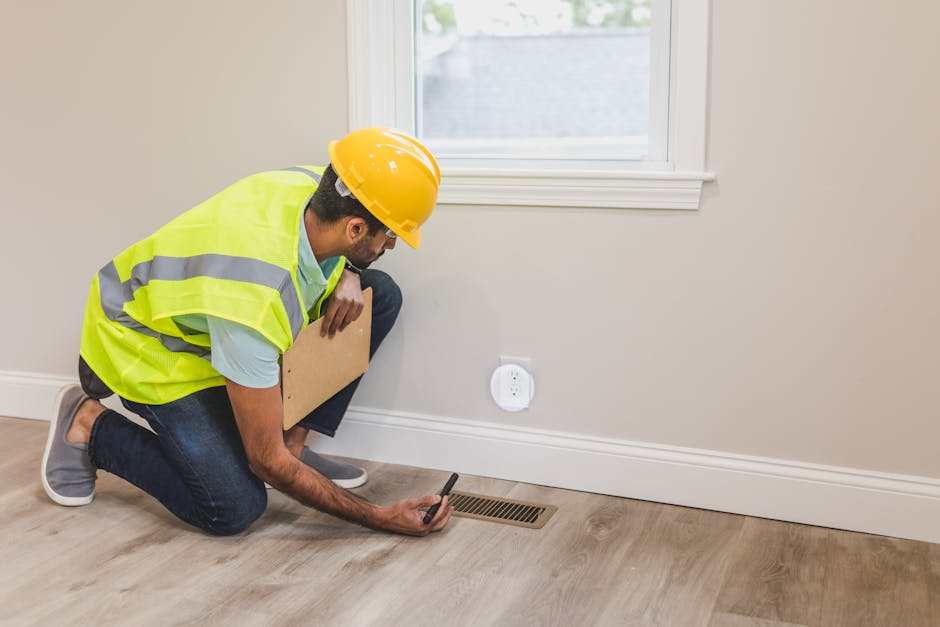
Good maintenance doesn't need to be complicated. A simple routine works wonders: clean your walk in cooler floor daily with gentle, non-abrasive cleaners; inspect weekly for any damage or moisture issues; check seals and transitions monthly; and every quarter, take time for a thorough assessment of the overall condition.
Need replacement parts or maintenance supplies? You can find what you need at walkincoolerparts.com. And remember, when it comes to insulation materials, polyurethane is the most efficient choice for most walk-in cooler applications.
Signs Your Walk In Cooler Floor Needs Attention
Your floor will tell you when something's wrong—if you know what to look for. Physical warning signs include buckling or uneven surfaces, soft spots that give under weight, visible cracks or separated seams, moisture puddles, and frost heave (where the floor swells upward).
But don't just look down—pay attention to operational clues too. Unexplained increases in energy bills, difficulty maintaining consistent temperatures, your compressor running more than usual, unusual condensation patterns, or musty odors can all signal floor problems.
One of our Tennessee clients learned this lesson the hard way. "They noticed a small seam separation but figured it wasn't urgent," recalls our service technician. "Six months later, moisture had seeped into the insulation, cutting its effectiveness in half. What should have been a quick repair turned into replacing the entire floor."
We recommend taking photos during regular maintenance checks. This visual record helps track gradual changes that might otherwise go unnoticed until they become serious problems.
Repair or Replace? Decision Workflow
When you find damage to your walk in cooler floor, deciding whether to repair or replace isn't always straightforward. Start by assessing the extent of the damage—is it just in one spot or widespread? Does it affect only the surface, or has it penetrated to the insulation? Is moisture involved?
For minor surface damage, patching compounds or overlays often work well. Seam issues can usually be addressed with appropriate sealants. If damage is confined to one area, replacing individual panels might be your best option.
"The age of your floor really matters when making this decision," our project manager points out. "A newer floor with isolated damage is usually worth repairing, but if your floor is older and you're also seeing higher energy bills, replacement might make more economic sense in the long run."
Consider your operational needs too. Can you schedule repairs in stages to keep part of your cooler running? Do you have access to temporary cold storage during replacement? How long will it take for temperatures to stabilize after work is completed?
For many of our clients who can't afford extended downtime, we recommend overlay systems that install right on top of existing floors. These systems minimize disruption while providing a fresh, durable surface—particularly valuable for busy mortuaries where operations simply can't stop.
At American Mortuary Coolers, we understand that every situation is unique. Whether you're in Johnson City, TN, or anywhere across the continental US, we're happy to help you evaluate your specific circumstances and find the solution that best balances your immediate needs with long-term performance.
Innovations, Finishes & Cost Considerations
The world of walk in cooler floor technology keeps getting better, with exciting new materials that make your cooler safer, cleaner, and more efficient. I've watched these innovations transform our industry over the years, and the improvements are truly impressive.
One of my favorite developments has been the rise of antimicrobial epoxy systems. These specialized coatings don't just look good - they actively fight bacteria right at the floor level. We've installed these in numerous mortuaries where they create a seamless surface that's incredibly easy to clean. The best part? Many can be applied overnight, meaning your facility barely misses a beat.
For environmentally-conscious clients, recycled PVC flooring has become a popular choice. Made from up to 95% recycled materials, these floors resist chemicals beautifully while providing excellent slip protection. One client told me, "It's nice knowing we're making a responsible choice without sacrificing quality."

"The future of walk-in cooler floors isn't just about being cold," as I often tell clients at American Mortuary Coolers. "It's about creating intelligent surfaces that do more than one job." We're seeing remarkable innovations like FRP channel reinforcement - fiberglass-reinforced plastic channels that boost load capacity without creating cold bridges like metal does. Even more exciting are the smart sensor systems being embedded in modern floors that monitor temperature and moisture conditions in real-time, alerting you to potential issues before they become expensive problems.
Emerging Technology: Slip-Resistant, Antimicrobial Coatings
If there's one innovation that's truly changing the game for walk in cooler floor technology, it's the new generation of coating systems that tackle both slip hazards and bacteria growth simultaneously.
Products like JetRock epoxy and Everlast flooring have transformed what's possible in cold storage environments. These coatings create completely seamless surfaces - no joints or seams where bacteria can hide. The antimicrobial additives work continuously to inhibit growth of bacteria, mold, and mildew, while the textured surface provides reliable traction even when wet.
"We installed an antimicrobial epoxy system for a mortuary in Nashville last year," shares our installation team leader. "The owner called me after six months to say it was the best investment they'd made in years - easier to clean, no more slip concerns, and the staff felt more confident working in the space."
What really sells these systems for many of our clients is the installation speed. While traditional floor replacements might shut down your facility for days, many of these coating systems can be applied and ready for use within 8-12 hours. For busy mortuaries, that minimal disruption is invaluable.
These premium surfaces aren't just a pretty face - they're built to last. Quality epoxy systems typically serve faithfully for 10-15 years, with some manufacturers claiming their products outperform concrete by a factor of three in strength tests. For facilities where cleanliness is non-negotiable, these surfaces have become the gold standard.
Budgeting Your Walk In Cooler Floor Project
When planning for a new or replacement walk in cooler floor, understanding the full financial picture helps prevent surprises. Let's talk real numbers.
For insulated floor panels, expect to invest between $15-30 per square foot, depending on load rating and finish. If you're looking at epoxy coating systems to refresh an existing surface, budget $7-15 per square foot. Diamond tread aluminum - a favorite in many of our mortuary installations - typically runs $8-12 per square foot for materials alone. And don't forget that structural reinforcement, when needed, can add 20-40% to your base floor cost.
Labor is another significant piece of the puzzle. Installation of new panels generally adds about 30-40% to your material costs. Surface preparation for coatings varies widely based on your current floor condition - sometimes this is straightforward, other times it's the most labor-intensive part of the project.
"Most people remember to budget for the visible parts but forget about the hidden costs," I remind clients. Freight charges for panel systems can be substantial. Disposal of old materials gets more expensive each year as environmental regulations tighten. And perhaps most importantly - what's the cost of downtime during installation? Will you need temporary cold storage while work is underway?
At American Mortuary Coolers, we believe in transparent pricing. Our quotes break down every expense so you can see exactly where your investment is going. We've found this helps our clients make better decisions about balancing upfront costs against long-term value.
Many clients find that investing in a higher-quality floor initially pays dividends over time. Energy savings from better insulation, reduced maintenance headaches, and longer service life often make the premium options more economical in the long run. And don't forget to investigate potential financial incentives - energy efficiency rebates, tax credits, and accelerated depreciation can significantly offset your initial investment.
"The cheapest floor is rarely the most affordable," as we like to say. When you consider the total lifecycle cost rather than just the initial price tag, quality almost always wins the value comparison.
Frequently Asked Questions about Walk In Cooler Floors
Do all walk-in coolers and freezers require an insulated floor?
The short answer is no – not every walk-in cooler needs an insulated floor, but every walk-in freezer absolutely does. Here's the breakdown of when you need one and when you might not:
For freezers (anything operating below 32°F), there's no getting around it – federal guidelines mandate an insulated floor with at least R-28 insulation value. This isn't just a suggestion; it's a requirement that protects both your equipment and building structure.
For coolers, it gets a bit more flexible. If you're installing directly on a ground-level concrete slab with nothing underneath (no basement, no crawlspace), you might be able to skip the insulated floor. We call these "floorless" installations, though they still need proper sealing where the walls meet the concrete.
I remember visiting a client in Johnson City who was convinced they could save money with a floorless freezer installation. I had to gently explain that while that works for some coolers, freezers are a different animal entirely. As I often tell our customers at American Mortuary Coolers, "You can cool without an insulated floor, but you can't freeze without one."
Even when not strictly required, an insulated walk in cooler floor often makes good business sense. Our technical director puts it plainly: "Most insulated floors pay for themselves within 3-5 years through energy savings alone." That's before you factor in preventing potential moisture issues down the road.
How thick should the insulation be for my freezer floor?
When it comes to freezer floors, federal guidelines set R-28 as the minimum insulation value. In practical terms, this typically means:
Polyurethane foam needs to be about 4 inches thick, giving you an initial R-value around 32. This is what we use in most of our American Mortuary Coolers installations because of its excellent insulating properties.
Extruded polystyrene requires about 4.75 inches to achieve the same insulation value, though it tends to maintain its R-value better over the long haul.
The R-28 requirement is just the starting point. For freezers in particularly warm climates (like our installations in Florida or Texas) or for ultra-low temperature applications, we often recommend bumping up to R-32 or even higher.
"Think of R-28 as the legal minimum, not necessarily the optimal value," our insulation specialist often says. "It's like the minimum tread depth on your tires – legal, but not always ideal for every condition."
Insulation performance can degrade slightly over time. Polyurethane starts around R-8 per inch but may settle to about R-7 per inch as years pass. We account for this when designing walk in cooler floor systems that will serve you well for decades, not just the first few years.
Can I install a new surface over a damaged metal floor?
Yes, you often can install a new surface over a damaged metal walk in cooler floor – but (and this is a big but) only after proper assessment. At American Mortuary Coolers, we approach this question with a three-step process:
First, we need to understand what's really happening with your floor. Is the damage just cosmetic scratches on the metal surface? Or has moisture seeped in and compromised the insulation underneath? A floor might look fine from above but hide serious issues below. We've seen it all – from simple surface rust to floors where the insulation had turned to mush from years of undetected leaks.
Second, we'll help you explore overlay options based on your specific situation. Epoxy systems work beautifully over properly prepped metal surfaces. Diamond tread aluminum offers excellent durability if properly secured. For less demanding environments, PVC systems might be the ticket.
Third comes proper preparation – the make-or-break step that determines whether your new surface will last two years or twenty. This means thorough cleaning, addressing any loose areas, and applying the right primers or bonding agents.
"Overlays are like building on a foundation," our renovation specialist often says. "If that foundation is compromised, no amount of pretty finishing will make it last."
The beauty of overlay systems is they minimize disruption. Most mortuaries and funeral homes can't afford extended downtime, and overlays typically require just a fraction of the time needed for complete replacement. They also generate less waste and usually cost significantly less.
That said, overlays aren't magic. If your insulation is compromised or there are structural issues, sometimes replacement is the only sensible option. We'll always give you the straight talk about what your floor truly needs – even when it's not what you were hoping to hear.
Conclusion
Choosing the right walk in cooler floor isn't just a checkbox on your facility planning list—it's a decision that will impact your operation every single day for years to come. After working with hundreds of clients across the country, we've seen how the right floor makes all the difference in energy costs, safety, and long-term satisfaction.
Think of your walk-in cooler floor as the foundation of your cold storage success. It's not just supporting your inventory; it's protecting your investment, maintaining your temperatures, and keeping your energy bills in check. A well-designed floor works silently in the background while you focus on what matters—running your business.
Location matters tremendously when planning your cooler floor. A mortuary in humid Florida has very different needs than one in dry Arizona. Whether you're installing at ground level, over a basement, or on an upper floor completely changes your requirements. We've guided clients through these decisions in all 48 contiguous states, bringing our Tennessee craftsmanship to doorsteps nationwide.
Your traffic patterns tell us everything we need to know about the right floor for you. The quiet funeral home with primarily foot traffic has vastly different needs than the busy facility constantly moving heavy carts. We've designed floors for both situations and everything in between, ensuring each can handle its unique demands without premature failure.
Compliance isn't optional in our industry—it's essential. Health inspectors don't give points for trying, which is why we design every walk in cooler floor to meet or exceed all applicable codes and regulations. Your peace of mind matters to us as much as the technical specifications.
I often tell clients that focusing solely on the initial price tag is like buying the cheapest tires for your car—it might feel good at checkout, but you'll pay for it down the road. Quality floors that cost a bit more upfront often deliver remarkable savings through energy efficiency and extended lifespan. One client in Chicago saved enough on energy in just four years to completely offset the additional cost of their premium floor system.
At American Mortuary Coolers, we're not just selling equipment—we're building relationships. Many of our first-time customers become lifelong clients because we take the time to understand their unique needs and deliver solutions that truly work for them. Our team's craftsmanship shines in every detail, from the precision of our panel fits to the durability of our finishes.
We'd love to help you explore your options and find the perfect solution for your facility. Our Chill Out with Free Shipping on Walk-In Mortuary Coolers program makes it easier than ever to get the quality cooler you need without breaking your budget on shipping costs.
Your walk-in cooler sits on its floor, but our business stands on something else entirely—the trust and satisfaction of our customers. Let's build something great together, starting from the ground up.


